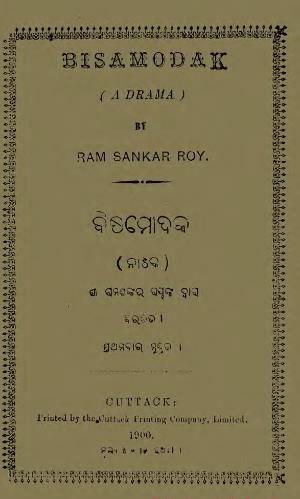Bisamodaka is a landmark Odia drama written by the renowned playwright Rama Shankara Ray De, published in 1900. It stands as a significant contribution to the Odia literary and cultural landscape, reflecting the socio-political climate of its time. This dramatic work not only showcases Ray De’s literary prowess but also serves as a vehicle for exploring deep societal issues, human emotions, and cultural identity.
Set against the backdrop of rural Odisha, Bisamodaka unfolds a tale filled with intrigue and emotional depth. The drama revolves around the themes of love, sacrifice, and the complex relationships that bind individuals within a community. The protagonist, a symbol of resilience and virtue, navigates through challenges posed by societal expectations and the pursuit of personal happiness.
The narrative begins with the introduction of key characters, showcasing their aspirations and conflicts. As the story progresses, each character’s journey intertwines, leading to moments of tension and revelation. The play’s title, Bisamodaka, refers to the metaphorical poison (visha) that signifies the challenges and adversities faced by the characters. It represents not only the external struggles but also the internal dilemmas that each character grapples with.
One of the most striking aspects of Bisamodaka is its exploration of societal norms and the psychological struggles of its characters. The play addresses the rigid caste system and gender roles prevalent in early 20th-century Odisha. Through vivid dialogues and dramatic confrontations, Ray De critiques these social structures and sheds light on the need for reform.
The symbol of Bisamodaka itself serves as a poignant reminder of the dichotomies of life—how pain can coexist with beauty and how challenges can lead to personal growth. The characters often find themselves at crossroads, where their decisions are influenced by love, duty, and the desire for social acceptance. Ray De masterfully crafts these conflicts, allowing the audience to connect with the characters on an emotional level.
Bisamodaka is not just a work of fiction; it is a reflection of Odia culture and traditions at the turn of the century. The dialogues are infused with rich linguistic nuances and cultural references, making it a delightful read for both locals and connoisseurs of literature. Ray De’s ability to authentically capture the essence of Odia life through his characters and narrative style serves as a testament to his understanding of human nature and societal dynamics.
The play also played a crucial role in the revival of Odia drama, inspiring future playwrights to delve into similar themes and conflicts. Its relevance continues to echo, as contemporary audiences can relate to the struggles depicted in the play, reminding us that the quest for identity, love, and acceptance remains timeless.
Books Info
| Books name | Bisamodaka / ବିଷମୋଦକ |
| Author | Rama Shankara Ray |
| No Of pages | 69 |
| Publisher | NA |
| Publication | 1900 |
| Printed At | The Cuttack Printing Company Ltd. |
| Distributor | NA |

